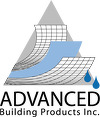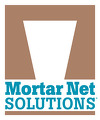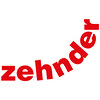
Health, Safety, and Welfare
All courses identified as HSW, cover Health, Safety, and Welfare topics and have been approved by the AIA (American Institute of Architects) as an HSW Learning Unit (LU/HSW).
Displaying 451 - 475 of 562 results.
FIRST PREV [401-425] [426-450] [451-475] [476-500] [501-525] NEXT LASTScan this code with your mobile device camera to take this page on-the-go!

https://redirect.aecdaily.com/s2356/www.aecdaily.com/course/893368

 An air curtain, also known as an air door, employs a controlled stream of air aimed across an opening to create an air seal. This seal separates different environments while allowing a smooth, unhindered flow of traffic and unobstructed vision through the opening. This course discusses how air curtains work and why they can contribute to occupant comfort, energy efficiency, and indoor air quality when the door is open. It also reviews how air curtains improve whole-building energy efficiency versus conventional methods.
An air curtain, also known as an air door, employs a controlled stream of air aimed across an opening to create an air seal. This seal separates different environments while allowing a smooth, unhindered flow of traffic and unobstructed vision through the opening. This course discusses how air curtains work and why they can contribute to occupant comfort, energy efficiency, and indoor air quality when the door is open. It also reviews how air curtains improve whole-building energy efficiency versus conventional methods.
Scan this code with your mobile device camera to take this page on-the-go!

https://redirect.aecdaily.com/s1081629/www.aecdaily.com/course/1106239

 Wildfires are becoming more common and severe, posing a significant threat to communities worldwide. Architects and the building industry must adopt a proactive approach to address this issue. In this course, we explore innovative and eco-friendly wildfire defense systems, which can play a vital role in protecting our communities and the environment from the harmful effects of wildfires and addressing the current home insurance crisis.
Wildfires are becoming more common and severe, posing a significant threat to communities worldwide. Architects and the building industry must adopt a proactive approach to address this issue. In this course, we explore innovative and eco-friendly wildfire defense systems, which can play a vital role in protecting our communities and the environment from the harmful effects of wildfires and addressing the current home insurance crisis.
Scan this code with your mobile device camera to take this page on-the-go!

https://redirect.aecdaily.com/s12454/www.aecdaily.com/course/969706

 Exterior shading devices offer a number of advantages that contribute to a more sustainable building, including minimizing cooling costs, reducing peak electricity demand, and controlling glare. These benefits result in greater occupant comfort and improved productivity. This course provides a review of exterior aluminum shading device systems, including the components, finishes, and design and engineering considerations, as well as a discussion of how shading strategies contribute to LEED® certification.
Exterior shading devices offer a number of advantages that contribute to a more sustainable building, including minimizing cooling costs, reducing peak electricity demand, and controlling glare. These benefits result in greater occupant comfort and improved productivity. This course provides a review of exterior aluminum shading device systems, including the components, finishes, and design and engineering considerations, as well as a discussion of how shading strategies contribute to LEED® certification.
Scan this code with your mobile device camera to take this page on-the-go!

https://redirect.aecdaily.com/s12474/www.aecdaily.com/course/926173

 In commercial, industrial, and parking structures, it is important to use doors that can provide speed, safety, separation, and security. High-performance roll-up doors provide all these elements better than conventional doors. This course provides an in-depth discussion of the different types of high-performance doors—fabric, rigid, and rubber—along with their benefits and functions in different applications. The design and installation considerations for using these doors are also discussed.
In commercial, industrial, and parking structures, it is important to use doors that can provide speed, safety, separation, and security. High-performance roll-up doors provide all these elements better than conventional doors. This course provides an in-depth discussion of the different types of high-performance doors—fabric, rigid, and rubber—along with their benefits and functions in different applications. The design and installation considerations for using these doors are also discussed.
Scan this code with your mobile device camera to take this page on-the-go!

https://redirect.aecdaily.com/s860757/www.aecdaily.com/course/879645

 The availability of parking and the time it takes to park a vehicle are major challenges when designing a new development. Parking garages typically require big volumes and are not efficient with land use. Automated parking can practically reduce parking space, while providing the same (sometimes more) number of parking stalls as a conventional garage. It also improves the user experience, providing a valet parking experience, just without the valet.
The availability of parking and the time it takes to park a vehicle are major challenges when designing a new development. Parking garages typically require big volumes and are not efficient with land use. Automated parking can practically reduce parking space, while providing the same (sometimes more) number of parking stalls as a conventional garage. It also improves the user experience, providing a valet parking experience, just without the valet.
Scan this code with your mobile device camera to take this page on-the-go!

https://redirect.aecdaily.com/s671/www.aecdaily.com/course/985501

 The primary purpose of a roof is to provide shelter and protection; to do so effectively over the long term, proper drainage and ventilation are required. Presented here are the categories of metal roofing, the moisture- and noise-related issues associated with architectural metal roofs, the use of a three-dimensional drainage and ventilation mat as a solution to these issues, and best practices for incorporating a mat in metal and cedar roof assemblies.
The primary purpose of a roof is to provide shelter and protection; to do so effectively over the long term, proper drainage and ventilation are required. Presented here are the categories of metal roofing, the moisture- and noise-related issues associated with architectural metal roofs, the use of a three-dimensional drainage and ventilation mat as a solution to these issues, and best practices for incorporating a mat in metal and cedar roof assemblies.
Scan this code with your mobile device camera to take this page on-the-go!

https://redirect.aecdaily.com/s1078641/www.aecdaily.com/course/1083010

 Solid surface material is a durable and sustainable solution for custom architectural solutions. Explore the extensive design possibilities of this nonporous, thermoformable material and review key performance characteristics and fabrication guidelines.
Solid surface material is a durable and sustainable solution for custom architectural solutions. Explore the extensive design possibilities of this nonporous, thermoformable material and review key performance characteristics and fabrication guidelines.
Scan this code with your mobile device camera to take this page on-the-go!

https://redirect.aecdaily.com/s1092024/www.aecdaily.com/course/1121808

 Roof and floor hatches offer practical solutions for improving accessibility, safety, and functionality in residential, commercial, and industrial buildings. They must be designed and specified to provide safe access to rooftops and below-ground spaces to facilitate maintenance, inspections, equipment installations, and more. The specification considerations for roof, floor, and skylight hatches are presented here. Discussions include size considerations, material options, types of operation, safety features, loads, and thermal, fire, and acoustic performance.
Roof and floor hatches offer practical solutions for improving accessibility, safety, and functionality in residential, commercial, and industrial buildings. They must be designed and specified to provide safe access to rooftops and below-ground spaces to facilitate maintenance, inspections, equipment installations, and more. The specification considerations for roof, floor, and skylight hatches are presented here. Discussions include size considerations, material options, types of operation, safety features, loads, and thermal, fire, and acoustic performance.
Scan this code with your mobile device camera to take this page on-the-go!

https://redirect.aecdaily.com/s811813/www.aecdaily.com/course/948090

 Bathing facility code compliance does not have to result in an institutional look. Assisted living and healthcare facilities, hospitality installations, universities, multifamily buildings, and large commercial projects all have unique demands, and most require barrier-free, ADA, UFAS, ANSI, California Title 24, or Massachusetts compliant bathing and showering facilities. This course provides an overview of intelligent design solutions that simultaneously address these code requirements and the aesthetic and functional demands of each situation.
Bathing facility code compliance does not have to result in an institutional look. Assisted living and healthcare facilities, hospitality installations, universities, multifamily buildings, and large commercial projects all have unique demands, and most require barrier-free, ADA, UFAS, ANSI, California Title 24, or Massachusetts compliant bathing and showering facilities. This course provides an overview of intelligent design solutions that simultaneously address these code requirements and the aesthetic and functional demands of each situation.
Scan this code with your mobile device camera to take this page on-the-go!

https://redirect.aecdaily.com/s367902/www.aecdaily.com/course/999984

 Masonry is an ideal sustainable building construction material as it is extremely durable, recyclable, and reusable. It allows for extraordinary design versatility, so it can meet both aesthetic and functional requirements. This course looks at the design elements, components, and construction techniques that characterize sustainable masonry cavity wall building envelopes.
Masonry is an ideal sustainable building construction material as it is extremely durable, recyclable, and reusable. It allows for extraordinary design versatility, so it can meet both aesthetic and functional requirements. This course looks at the design elements, components, and construction techniques that characterize sustainable masonry cavity wall building envelopes.
Scan this code with your mobile device camera to take this page on-the-go!

https://redirect.aecdaily.com/s11609/www.aecdaily.com/course/903638

 Water intrusion creates a variety of problems for masonry structures, including freeze-thaw damage, chemical- and pollution-based attacks, efflorescence, calcium carbonate stains, and mold. This course reviews the application and specification considerations related to water repellents and how they can help to prevent these problems.
Water intrusion creates a variety of problems for masonry structures, including freeze-thaw damage, chemical- and pollution-based attacks, efflorescence, calcium carbonate stains, and mold. This course reviews the application and specification considerations related to water repellents and how they can help to prevent these problems.
Scan this code with your mobile device camera to take this page on-the-go!

https://redirect.aecdaily.com/s783922/www.aecdaily.com/course/1055654

 Installing snow retention systems on rooftop applications improves the safety of building occupants and can decrease the risk of property damage. This course identifies different snow guard styles and explains how each contributes to snow retention. Installation techniques are reviewed, and layout designs that maximize occupant safety and minimize hazards are also discussed.
Installing snow retention systems on rooftop applications improves the safety of building occupants and can decrease the risk of property damage. This course identifies different snow guard styles and explains how each contributes to snow retention. Installation techniques are reviewed, and layout designs that maximize occupant safety and minimize hazards are also discussed.
Scan this code with your mobile device camera to take this page on-the-go!

https://redirect.aecdaily.com/s579160/www.aecdaily.com/course/865704

 Local vacuum networks are economical and sustainable systems that provide deep, stable, high-quality vacuum to a variety of lab environments. In this course, the environmental and performance benefits of local vacuum networks vs. central vacuum systems are explored, along with discussions on their components and design and installation considerations. Brief case studies are used to highlight the wide range of flexible, adaptable solutions supported by this strategy.
Local vacuum networks are economical and sustainable systems that provide deep, stable, high-quality vacuum to a variety of lab environments. In this course, the environmental and performance benefits of local vacuum networks vs. central vacuum systems are explored, along with discussions on their components and design and installation considerations. Brief case studies are used to highlight the wide range of flexible, adaptable solutions supported by this strategy.
Scan this code with your mobile device camera to take this page on-the-go!

https://redirect.aecdaily.com/s497605/www.aecdaily.com/course/1097535

 Fireplaces have become standard in living rooms and dens, but gas and electric fireplaces can enhance many other areas of the home. This course reviews studies on the health and wellness benefits of fireplaces; architects and designers will learn how to add value when working with clients by providing them with scientific research that shows including fireplaces in home design has positive impacts on physical and mental health. Heat management methods, fireplace types and configurations, and media and design options are also discussed.
Fireplaces have become standard in living rooms and dens, but gas and electric fireplaces can enhance many other areas of the home. This course reviews studies on the health and wellness benefits of fireplaces; architects and designers will learn how to add value when working with clients by providing them with scientific research that shows including fireplaces in home design has positive impacts on physical and mental health. Heat management methods, fireplace types and configurations, and media and design options are also discussed.
Scan this code with your mobile device camera to take this page on-the-go!

https://redirect.aecdaily.com/s3379/www.aecdaily.com/course/916307

 The building envelope must withstand the effects of long-term exposure to the elements. This course explores rainscreen wall design and the control of hygrothermal loads. The traditional multicomponent backup wall assembly is compared with the single-component, insulated metal composite backup wall system, outlining key differences in design and construction and their overall effect on installation and performance.
The building envelope must withstand the effects of long-term exposure to the elements. This course explores rainscreen wall design and the control of hygrothermal loads. The traditional multicomponent backup wall assembly is compared with the single-component, insulated metal composite backup wall system, outlining key differences in design and construction and their overall effect on installation and performance.
Scan this code with your mobile device camera to take this page on-the-go!

https://redirect.aecdaily.com/s5759/www.aecdaily.com/course/1030625

 Metal roof and wall systems have long been specified for commercial, residential, and industrial buildings because they have a lengthy history of durability, reliability, and resilience. This course examines the attributes of metal panel systems and the design options that make metal-clad buildings sustainable, attractive, and suitable for a variety of applications and environmental conditions.
Metal roof and wall systems have long been specified for commercial, residential, and industrial buildings because they have a lengthy history of durability, reliability, and resilience. This course examines the attributes of metal panel systems and the design options that make metal-clad buildings sustainable, attractive, and suitable for a variety of applications and environmental conditions.
Scan this code with your mobile device camera to take this page on-the-go!

https://redirect.aecdaily.com/s1359/www.aecdaily.com/course/881285

 Gate and fencing systems can be both functional and decorative. This course illustrates how architectural gate and fencing systems can be designed to meet modern security and design requirements while harmonizing with their surrounding environment. Fencing and gate systems are discussed in terms of their composition, materials, coatings, finishes, and performance in interior and exterior applications.
Gate and fencing systems can be both functional and decorative. This course illustrates how architectural gate and fencing systems can be designed to meet modern security and design requirements while harmonizing with their surrounding environment. Fencing and gate systems are discussed in terms of their composition, materials, coatings, finishes, and performance in interior and exterior applications.
Scan this code with your mobile device camera to take this page on-the-go!

https://redirect.aecdaily.com/s1078698/www.aecdaily.com/course/1097505

 Energy conservation and occupant well-being, comfort, and productivity are issues of increasing concern in building design. This course illustrates how radiant heating and cooling systems address these issues positively and efficiently. It encompasses the various types of systems available and how they can contribute to credit requirements in the LEED® v4.1 Building Design and Construction rating system and the WELL Building Standard™ version 2. System workings, design, aesthetic considerations, advantages, testing and measuring protocols, and installation procedures are reviewed, and the course concludes with several installation examples.
Energy conservation and occupant well-being, comfort, and productivity are issues of increasing concern in building design. This course illustrates how radiant heating and cooling systems address these issues positively and efficiently. It encompasses the various types of systems available and how they can contribute to credit requirements in the LEED® v4.1 Building Design and Construction rating system and the WELL Building Standard™ version 2. System workings, design, aesthetic considerations, advantages, testing and measuring protocols, and installation procedures are reviewed, and the course concludes with several installation examples.
Scan this code with your mobile device camera to take this page on-the-go!

https://redirect.aecdaily.com/s831648/www.aecdaily.com/course/849407

 The Americans with Disabilities Act (ADA) applies to all state and local government agencies, commercial facilities, and public entities that have “places of public accommodation.” Presented in this course are the fundamentals of what accessibility means in terms of architectural door hardware specification. Topics include available hardware technology, the criteria for interior and perimeter access, and the codes and guidelines pertaining to the ADA requirements that affect door hardware selection.
The Americans with Disabilities Act (ADA) applies to all state and local government agencies, commercial facilities, and public entities that have “places of public accommodation.” Presented in this course are the fundamentals of what accessibility means in terms of architectural door hardware specification. Topics include available hardware technology, the criteria for interior and perimeter access, and the codes and guidelines pertaining to the ADA requirements that affect door hardware selection.
Scan this code with your mobile device camera to take this page on-the-go!

https://redirect.aecdaily.com/s1112878/www.aecdaily.com/course/1136083

 Designers increasingly focus on creating environments that improve the health, welfare, and productivity of occupants. This includes providing the benefits of daylight, fresh air, and access to the outdoors. This course explores how retractable roofs can extend the use of outdoor spaces year-round by converting them to daylit indoor spaces seasonally or with sudden weather changes. It explains the economic benefits, structure, and operation of various retractable roof types and how they can be customized to suit multiple site sizes and types, including rooftops. The course concludes with a series of case studies.
Designers increasingly focus on creating environments that improve the health, welfare, and productivity of occupants. This includes providing the benefits of daylight, fresh air, and access to the outdoors. This course explores how retractable roofs can extend the use of outdoor spaces year-round by converting them to daylit indoor spaces seasonally or with sudden weather changes. It explains the economic benefits, structure, and operation of various retractable roof types and how they can be customized to suit multiple site sizes and types, including rooftops. The course concludes with a series of case studies.
Scan this code with your mobile device camera to take this page on-the-go!

https://redirect.aecdaily.com/s14798/www.aecdaily.com/course/965465

 Undesirable acoustics in educational spaces have long been considered averse to our goals to effectively teach, create, collaborate, listen, and learn. Now, in the wake of implementing pandemic protocols, our acoustic comfort in these spaces is greatly challenged. This course examines the impacts of poor soundscapes in educational facilities and introduces innovative solutions for improving acoustics in these areas while keeping us comfortable and safe from exposure to emerging viruses.
Undesirable acoustics in educational spaces have long been considered averse to our goals to effectively teach, create, collaborate, listen, and learn. Now, in the wake of implementing pandemic protocols, our acoustic comfort in these spaces is greatly challenged. This course examines the impacts of poor soundscapes in educational facilities and introduces innovative solutions for improving acoustics in these areas while keeping us comfortable and safe from exposure to emerging viruses.
Scan this code with your mobile device camera to take this page on-the-go!

https://redirect.aecdaily.com/s579297/www.aecdaily.com/course/1069235

 Insights gained during the COVID-19 pandemic have shown how vulnerable we are to contagion through indoor air, but the pandemic also revealed many new solutions to better ensure indoor air quality. In this course, we examine the role of humidity in indoor air quality and its impact on air pollutants. We also discuss how to control humidity in residential and commercial spaces and review several solutions for humidity control.
Insights gained during the COVID-19 pandemic have shown how vulnerable we are to contagion through indoor air, but the pandemic also revealed many new solutions to better ensure indoor air quality. In this course, we examine the role of humidity in indoor air quality and its impact on air pollutants. We also discuss how to control humidity in residential and commercial spaces and review several solutions for humidity control.
Scan this code with your mobile device camera to take this page on-the-go!

https://redirect.aecdaily.com/s15796/www.aecdaily.com/course/626474

 Historically, traditional waterproofing methods involve the placement of a barrier or membrane between the concrete and water. Unlike membranes and other surface systems, crystalline waterproofing is designed to make the concrete itself waterproof. This course discusses how crystalline waterproofing technology provides a high level of performance to concrete structures and what design professionals need to know in order to specify and understand how this chemical technology can improve building projects, cut costs, and help earn LEED® credits.
Historically, traditional waterproofing methods involve the placement of a barrier or membrane between the concrete and water. Unlike membranes and other surface systems, crystalline waterproofing is designed to make the concrete itself waterproof. This course discusses how crystalline waterproofing technology provides a high level of performance to concrete structures and what design professionals need to know in order to specify and understand how this chemical technology can improve building projects, cut costs, and help earn LEED® credits.
Scan this code with your mobile device camera to take this page on-the-go!

https://redirect.aecdaily.com/s1021711/www.aecdaily.com/course/1044026

 Anytime a facility has people working on a roof, their safety and protection must be the priority. Even under the best conditions, working on a rooftop is dangerous due to the roof’s elevation, slope, and edge, as well as other hazards created by weather conditions, electricity, and power tools. This course reviews the hazards of the rooftop environment and the relevant Occupational Safety and Health Administration (OSHA) regulations to aid designers, property owners, and facility managers in selecting safe access and fall protection systems for their buildings.
Anytime a facility has people working on a roof, their safety and protection must be the priority. Even under the best conditions, working on a rooftop is dangerous due to the roof’s elevation, slope, and edge, as well as other hazards created by weather conditions, electricity, and power tools. This course reviews the hazards of the rooftop environment and the relevant Occupational Safety and Health Administration (OSHA) regulations to aid designers, property owners, and facility managers in selecting safe access and fall protection systems for their buildings.
Scan this code with your mobile device camera to take this page on-the-go!

https://redirect.aecdaily.com/s677063/www.aecdaily.com/course/897991

 It is an expectation that today’s buildings have to be more than just aesthetically pleasing: they have to provide measurable environmental benefits. This course outlines how insulated concrete forms (ICFs) help meet sustainable design objectives and examines the advantages that ICFs and ICF technology have over conventional construction materials for building envelopes in all building types.
It is an expectation that today’s buildings have to be more than just aesthetically pleasing: they have to provide measurable environmental benefits. This course outlines how insulated concrete forms (ICFs) help meet sustainable design objectives and examines the advantages that ICFs and ICF technology have over conventional construction materials for building envelopes in all building types.